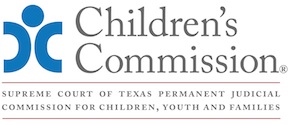
Texas Child Protection Law Bench Book
Updated September 2025
B. Pregnant Women and Relapse Prevention and Safety Plans
1. Pregnant Women and Substance Use
Neonatal abstinence syndrome (NAS) is a treatable condition that newborns may experience as a result of prenatal exposure to certain substances, most often opioids. Neonatal Opioid Withdrawal Syndrome (NOWS) is a related term that refers to the symptoms that infants may experience as a result of exposure to opioids.[162] Pregnant women using opioids should not discontinue opioid use due to the risk of maternal return to use, overdose, withdrawals, and fetal demise. The American College of Obstetricians and Gynecologists (ACOG) and SAMHSA recommend Medications for Opioid Use Disorder (MOUD), previously referred to as Medication Assisted Treatment or MAT, as a best practice in managing an opioid use disorder in pregnancy.[163] Research also indicates women with substance use disorder should continue their opioid agonist pharmacotherapy (MOUD) postpartum. The postpartum period represents a time of increased vulnerabilities, and women with opioid use disorder experience recurrence far more often in the postpartum period compared with during pregnancy.[164]
Since 1994, SAMHSA has designated pregnant women as a federal priority population in SUD treatment services. To better meet the needs of this priority population HHSC has a variety of substance use treatment services specifically designed to treat pregnant women and women with dependent children including withdrawal management, residential and outpatient treatment, and Medications for Opioid Use Disorder.
Special Issue: “Medication for Opioid Use Disorder” (MOUD) is the recommended term to replace MAT. “Return to use” is the recommended term to avoid shame and stigma associated with the term “relapse,” however “relapse” and “relapse prevention” are still commonly used terms.
2. Recurrence/Return to Use Prevention
According to the National Center on Substance Abuse and Child Welfare, research shows medications used in MOUD, when provided at the proper dose, have no adverse effects on a person's intelligence, mental capability, physical functioning, or employability. Medications for Opioid Use Disorder, along with a range of clinical and supportive services, can help people achieve stability while focusing on other aspects of their recovery, such as finding work, housing, or enhancing their parenting skills.[165]
At this time, there are no standardized resources statewide for the Department of Family and Protective Services (DFPS). Department of Family and Protective Services accesses state-funded and community resources that offer individualized treatment approaches to meet the needs of parents and families. Relevant DFPS policy states the following regarding recurrence (relapse) prevention planning:
• Relapse is a return to a pattern of substance use after a period of non-use.
• In the relapse safety plan, the person, along with a trusted support system, plans to ensure the safety of the child or children in case relapse becomes an issue.
• Court orders supersede any actions that the person requests in the relapse safety plan.
• A relapse safety plan can be developed at any stage of service.”
Please see Developing a Safety Plan in Case a Client Relapses CPS Policy Handbook § 1982.2 for more information.[166]